Drought tolerant plants are at the top of the list if you have gaps to fill in your garden.
The record-breaking heat and drought in the UK this summer left our gardens fried and frazzled. And there are predictions that future years will also hold droughts and hotter temperatures.
But however hot or dry the long-term trend is, we can still have unexpectedly wet summers. Last summer there was twice the normal level of rainfall in my area.
So we don’t want to fill our gardens with drought tolerant plants which will struggle or die next time we have a wet summer.
So I’ve checked with some gardens I’ve known for some years, including my own, to see which plants did best in this year’s drought- but also looked good in last year’s unusually rainy summer.
Former garden designer and baking influencer, Jane Beedle, has a garden which survived this summer’s drought and last year’s wet weather, looking good in both. So here are her recommendations.
What’s the difference between drought tolerant and drought resistance?
It’s a question of degree. Drought resistant plants will survive very, very dry conditions for a prolonged period of time. Drought tolerant plants are plants that will survive unusual periods of drought, but will need a little more water than drought resistant plants.
It’s also worth remembering that even drought resistant plants can struggle in their first year.
There is a debate in the gardening world about whether you should water perennials and shrubs in their first summer, to help them get established, or whether it’s better to let them find their own way.
But you are more likely to lose a plant to drought if it’s in its first summer.
What are the best trees for dry gardens?
If you’re revamping your garden, then start with thinking about the trees. They provide the essential structure for a garden.
Young trees in particular will usually struggle if there’s a drought in their first few summers. So it’s generally considered to be advisable to keep watering them, however drought tolerant they are once established.
Olive trees – drought tolerant and often best in pots

Olive trees are very drought tolerant. But any plant in a pot will have to be given both fertiliser and water regularly, as it can’t get either out of the ground. Olive trees will survive most UK winters, which rarely go below minus 6C or 21F.
But if you live in a colder region, you will either need to wrap the tree in protective covering or take it indoors to a greenhouse in winter.
Pyrus calleyrana ‘Chanticleer’
Pyrus calleyrana ‘Chanticleer is known as the ‘perfect street tree’ because it is such a good survivor. As well as being drought tolerant, it absorbs pollution. It’s also low maintenance and pest free and it doesn’t grow too tall.
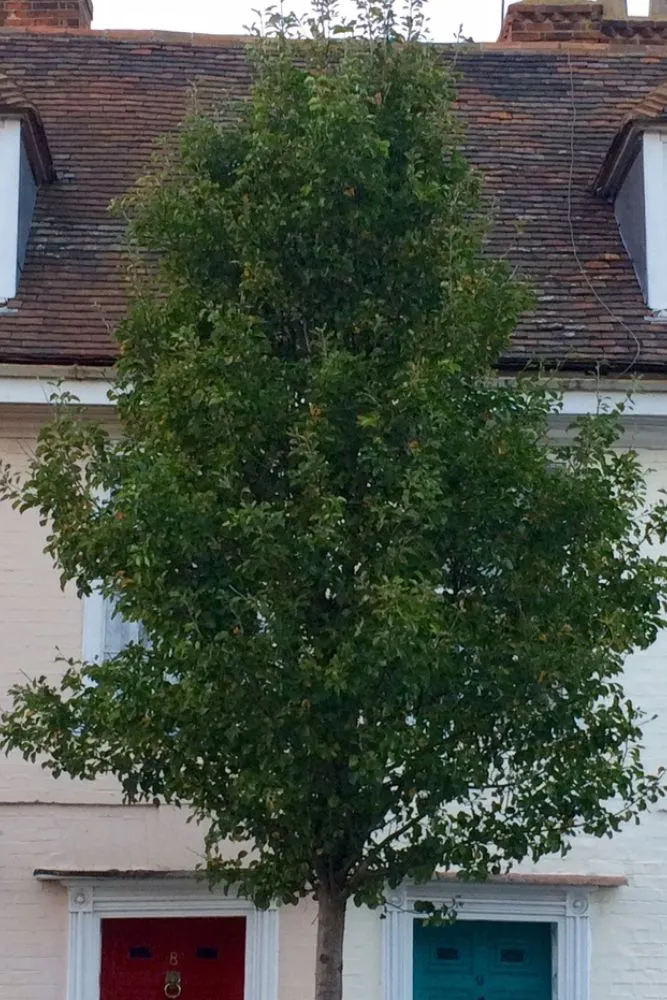
If you live in the United States, Pyrus calleyrana has become highly invasive in several states. Check whether it is invasive near you before buying it.
Silver birch – good in dry and damp summers
One of my favourite trees, the silver birch, is also recommended for dry summers. It won’t like very hot or humid weather, but it’ll be fine in the occasional wet summer.
Silver birch is very hardy and can survive temperatures down to minus 46C/minus 50F. Silver birch is considered invasive in some parts of North America, so check where you are.
Jane bought quite a mature silver birch. ‘It took four men to carry it through the house.’ However, if you buy a larger tree, you will have to water it well until it gets established. Give it a good watering once a week, letting at least a watering can full of water seep down deep into the soil.
Don’t just sprinkle water on the soil. That will encourage the roots to seek the surface water rather than to grow down deep.

What are the best drought tolerant shrubs?
Pittosporum
In Jane’s garden, Pittosporum ‘Golf Ball’ and ‘Irene Pattison’ handled the heat and drought this year without needing any water. And they also looked last summer, with twice the normal rainfall. Pittosporums are generally hardy down to minus 8C/17F, so they’re happy through a typical UK winter.
‘Golf Ball’ is a neat rounded shrub, often recommended as a substitute for box balls.
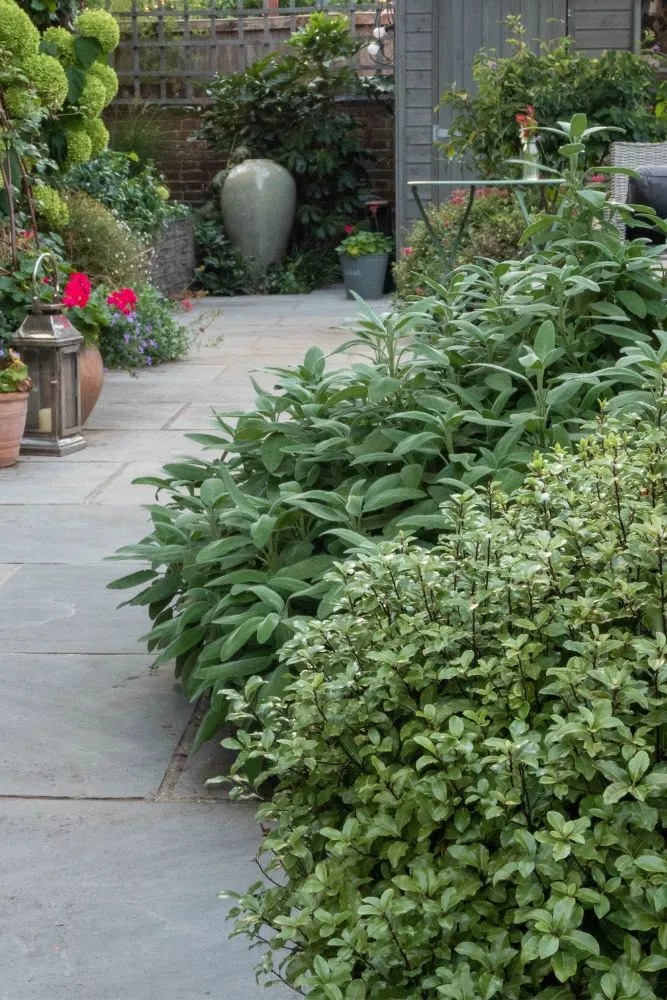
Nandina domestika
There are a number of varieties of Nandina domestika. It’s an evergreen shrub, and Jane has two types. One is ‘Limelight’ which is a bright citrus green.
She also recommends Nandina ‘Obsession’, which handled last year’s double dose of rainfall and this year’s record temperatures of 40C/104F without showing any signs of stress. It has red-tinted leaves and white flowers.
Fatsia japonica – the shrub that puts up with almost anything
Fatsia japonica is one of the most obliging plants. It will grow in quite deep shade and put up with neglect. Fatsia also has wonderfully sculptural leaves and it flowers in winter. So it has alot to offer wildlife.
It’s not very hardy, only down to minus 10C/14F, but that’s fine in most UK winters.
Drought tolerant perennials for beautiful borders
This last summer has really tested our borders in the UK. Some drought tolerant plants , such as crocosmia, seem to have suffered. But there are a few stars in Jane’s garden (and in mine too).
Anemanthele lessoniana
Also known as Pheasant’s Tail Grass, this is an easy-going grass which will be happy in sun or partial shade. Many ornamental grasses are drought resistant plants, but not all. This one, however, features in the Dry Garden at Beth Chatto Gardens, which are never watered and are in the driest part of the UK.
Other drought tolerant ornamental grasses include Stipa (gigantea and tenuissima, Calamagrostis, Panicum and Pennisetum.
Beth Chatto Gardens sells plants for dry areas online.
Echinacea purpurea
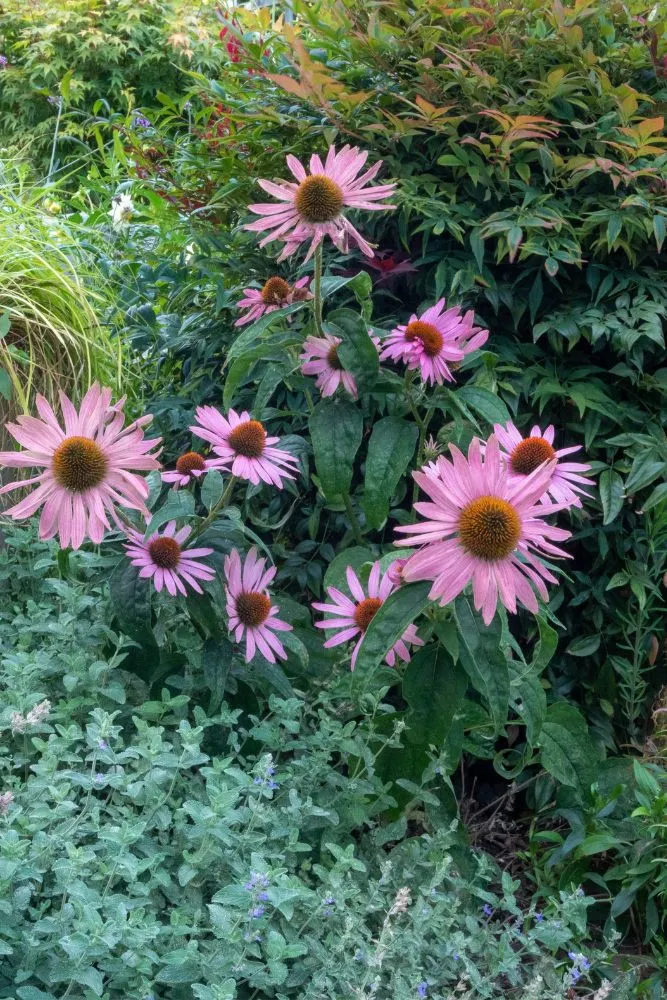
Hylotelephium (formerly known as Sedum) ‘Autumn Joy.’
This is a real star of the late summer and autumn garden, flowering for months. It’s best in full sun, and can get floppy in a shady spot. Hylotelephium is also very cold, and can over-winter down to minus 30C.
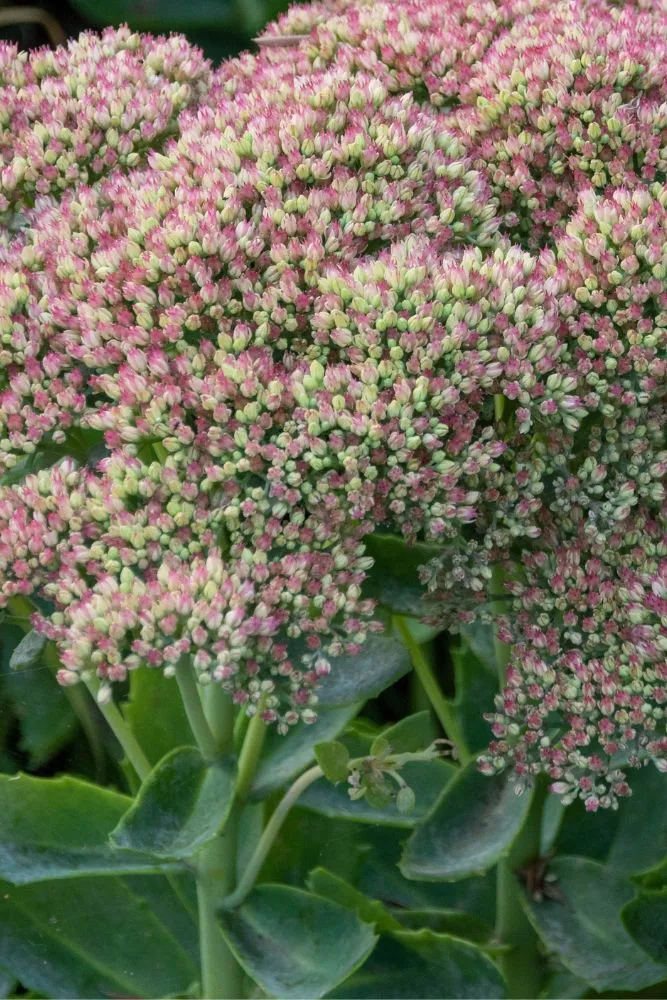
Nepeta (Catmint)
There are several pretty, long-flowering catmints, with blue flowers, such as Nepeta ‘Six Hills Giant’ and Nepeta ‘Walkers Low’. Nepetas are not just low maintenance drought resistant plants. They’ll deal with really quite a wet summer, too, although they won’t enjoy very boggy conditions. And they’re hardy down to about minus 20c/minus 4F.
You’re generally advised to plant Nepeta in full sun, but it seems happy with partial shade in my garden.

Perovskia ‘Blue Spire’ (now Salvia)
This elegant member of the sage family featured strongly in Doddington Place’s Rock Garden, which has not been watered for twelve years. After the long, hot July it looked as bright and cheerful as ever. It has recently been re-named by the botanists and should be referred to as Salvia ‘Blue Spire’, but so far, everyone still seems to be calling it Perovskia.
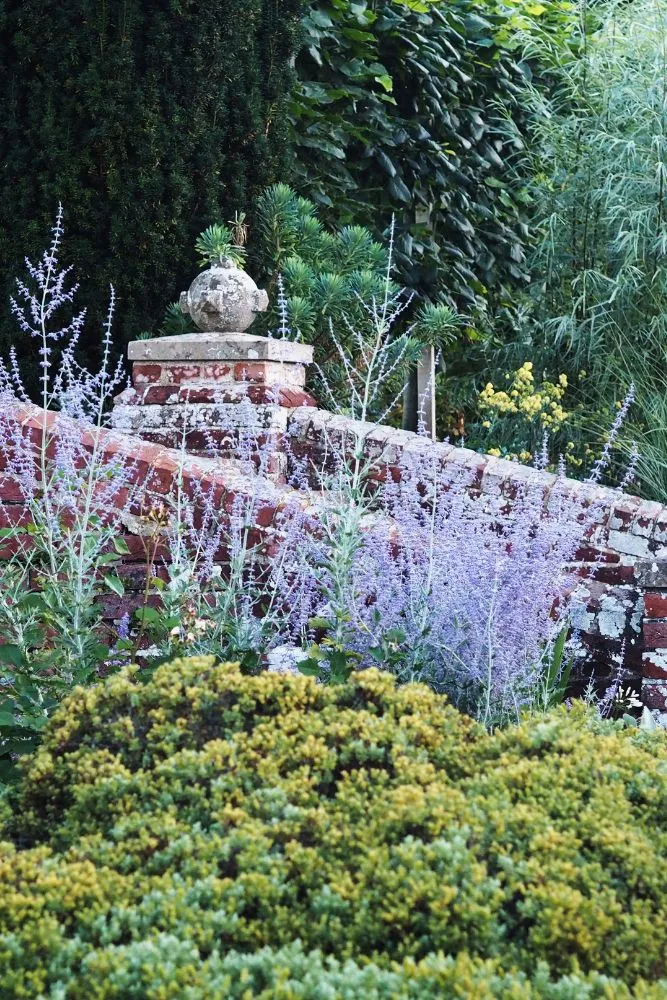
Salvias
Salvias are also in the sage family – and sage is well known as one of the most reliable drought tolerant plants. This is an enormous family, so you will need to check which salvia you are buying. Some are very tender and won’t even survive a UK winter, while others will happily live for years when winter temperatures go down to minus 35C/minus 30F.
Jane recommends Salvia ‘Greggii’, which is hardy down to about minus 10C/14F, and which flowers for months on end. She says that she chops it back to a small mound in late spring, and then plants around it. Every year it grows back into a large bush, and the flowers go on for months.
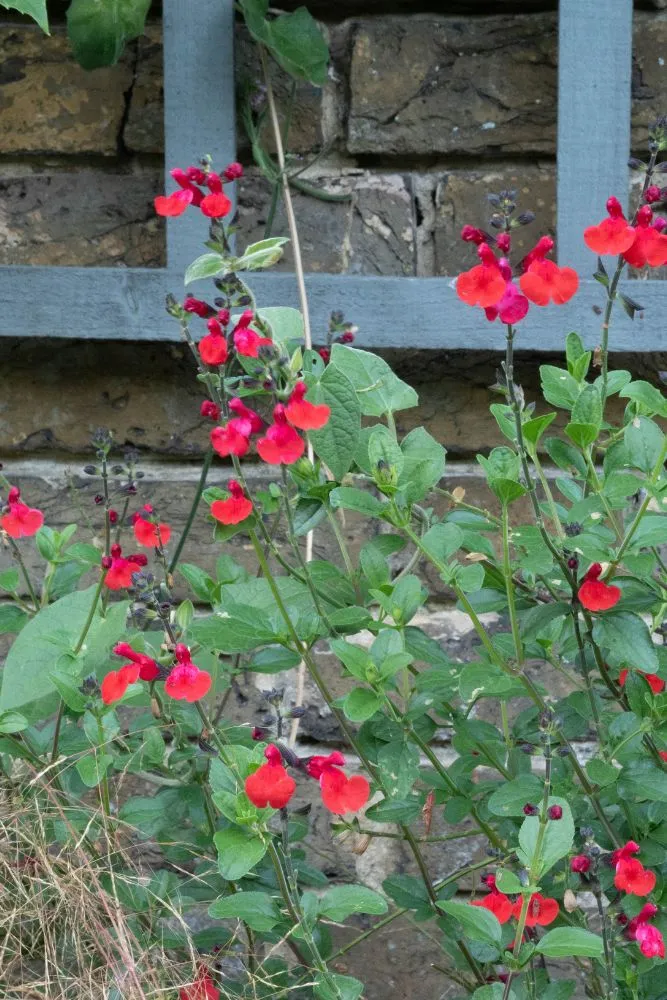
Verbena bonariensis
Verbena bonariensis is very popular for its tall, airy wands tipped with purple flowers. It’s loved by pollinators, too. Like Salvia ‘Greggii’, it hardly seemed to notice our 40C/104F heatwave.
Last summer it was just as pretty. And the seedheads remain into winter, feeding the birds and looking good in frost.
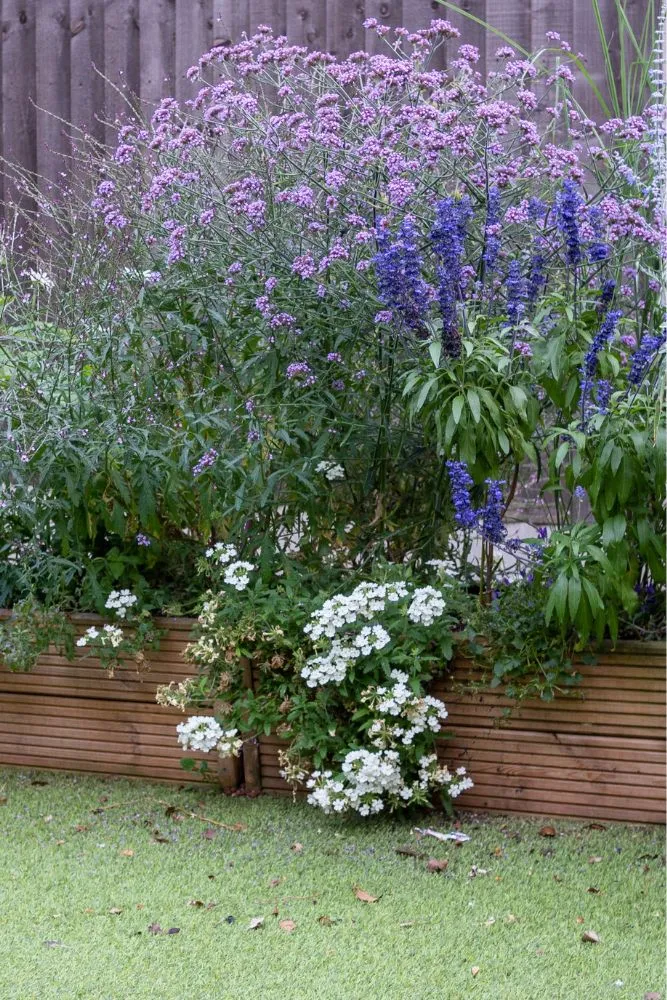
What is the best drought tolerant ground cover?
Teucrium chamaedrys
Also known as Dwarf Germander, has been one of the most drought tolerant plants in my garden this summer. It’s a low evergreen shrub with tiny pink flowers which are loved by bees.
I planted it about four years ago and it now drapes itself elegantly over the path. It was happy last summer too, in the wetter weather. This sweet little plant is good in either sun or shade, so it’s a very useful ground cover.
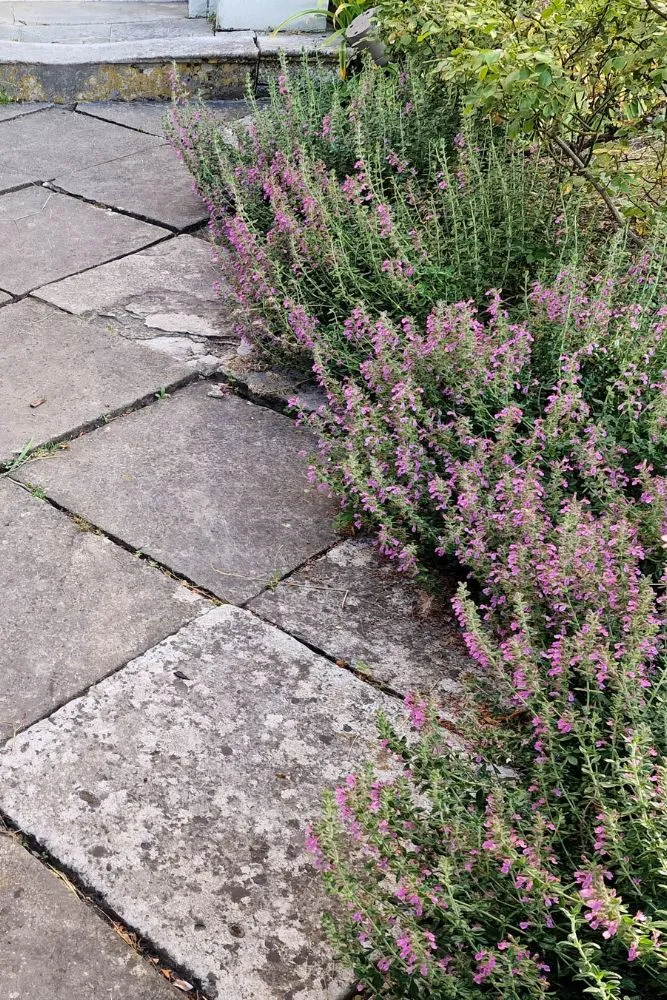
Drought tolerant plants for pots
You can plant any plant in a pot, and I successfully grew salvias in pots for a season. And even if you choose drought tolerant plants, you’ll still have to water pots regularly because the plants can’t get their roots from the soil. But these plants are less likely to wilt under the relentless heat of a hot, dry summer because they are ‘Mediterranean’ plants.
Pelargoniums
The classic Mediterranean plant for pots. They often come in vibrant pinks and reds. Jane’s garden has lots of green foliage and with pops of colour. Just one pelargonium is very effective.
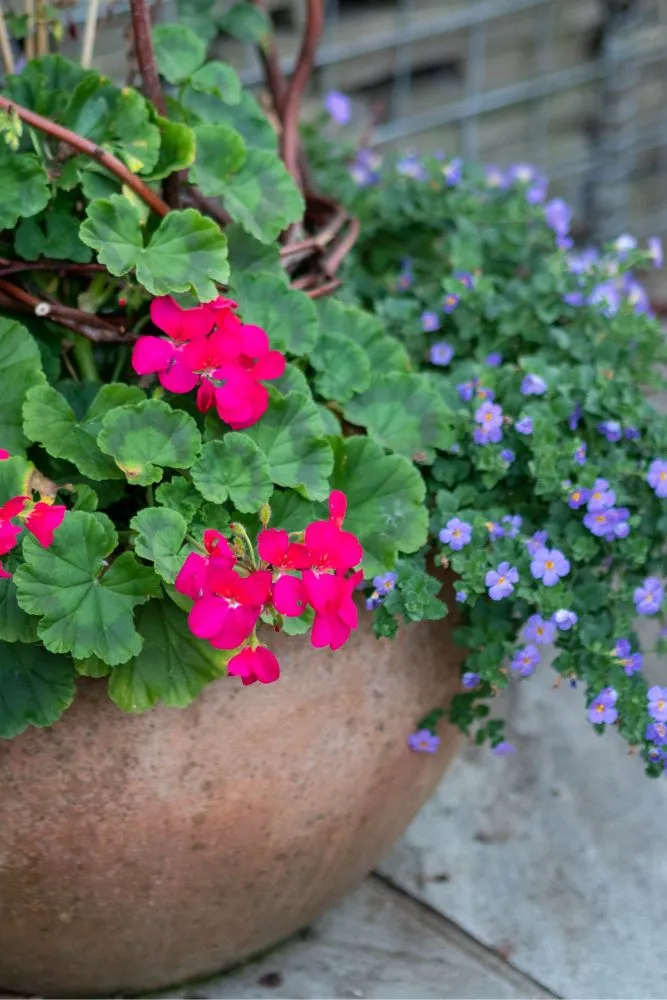
You always have to water and feed plants in pots, because even in a wet summer, very little rain can penetrate a pot full of flowers and foliage.
Tulbaghia violacea
This charming summer bulb underplants a small cherry tree in a pot in Jane’s garden. She also has it growing in one of the borders, where it has flowered happily without being watered.
You’re advised to grow tulbaghia in full sun, but Jane has the pot on the shadier side of her garden, where it is flowering well.

And a good drought tolerant climber…
Star jasmine
Jane notes that some clematis have flagged this summer. They’ve had fewer flowers or their flowers have been smaller, and they haven’t looked happy. But star jasmine or trachelospermum jasminoides has flowered in her garden for around two months, providing useful nectar for pollinators. The glossy leaves look healthy, and this climber also did well in last year’s wetter summer.


Leave a Reply